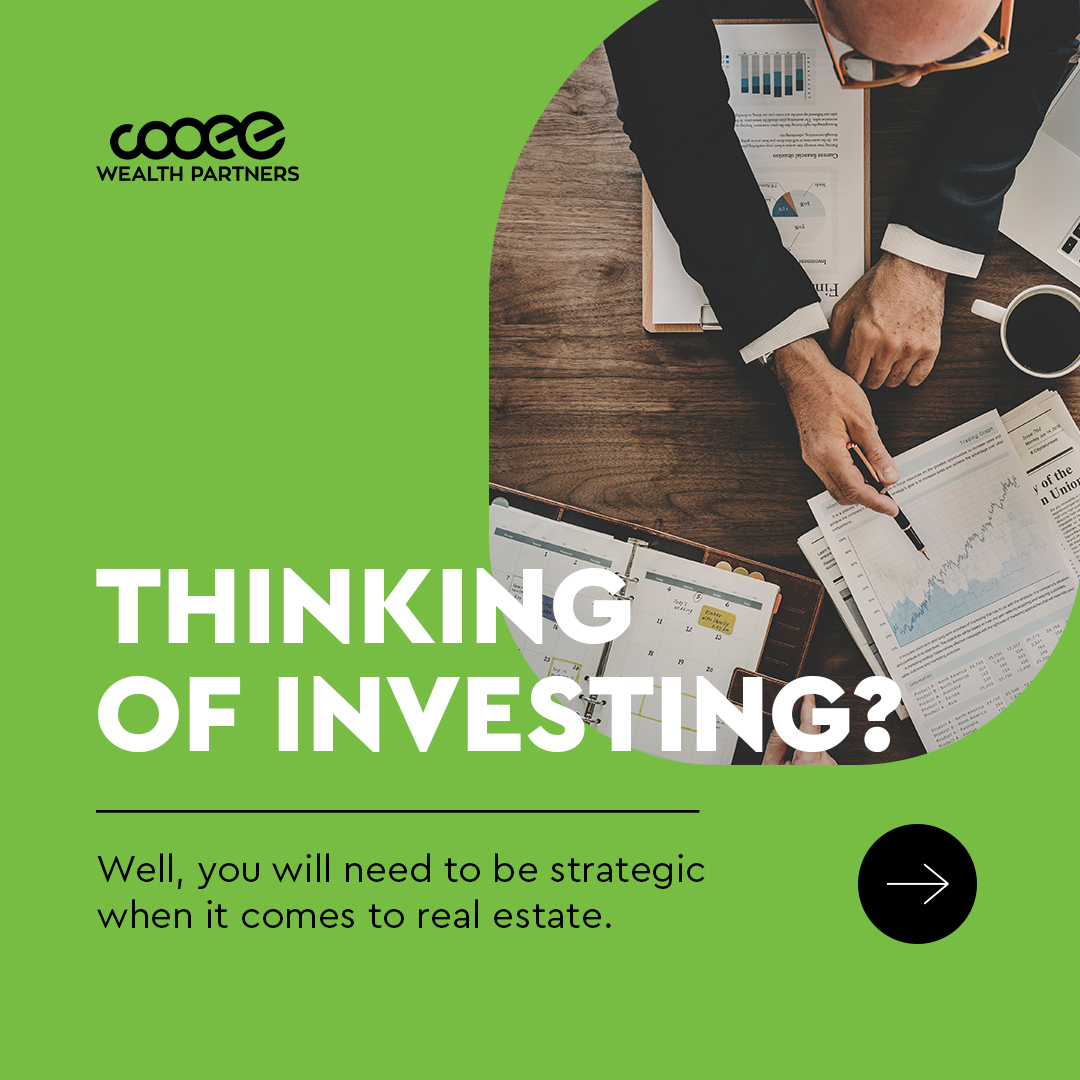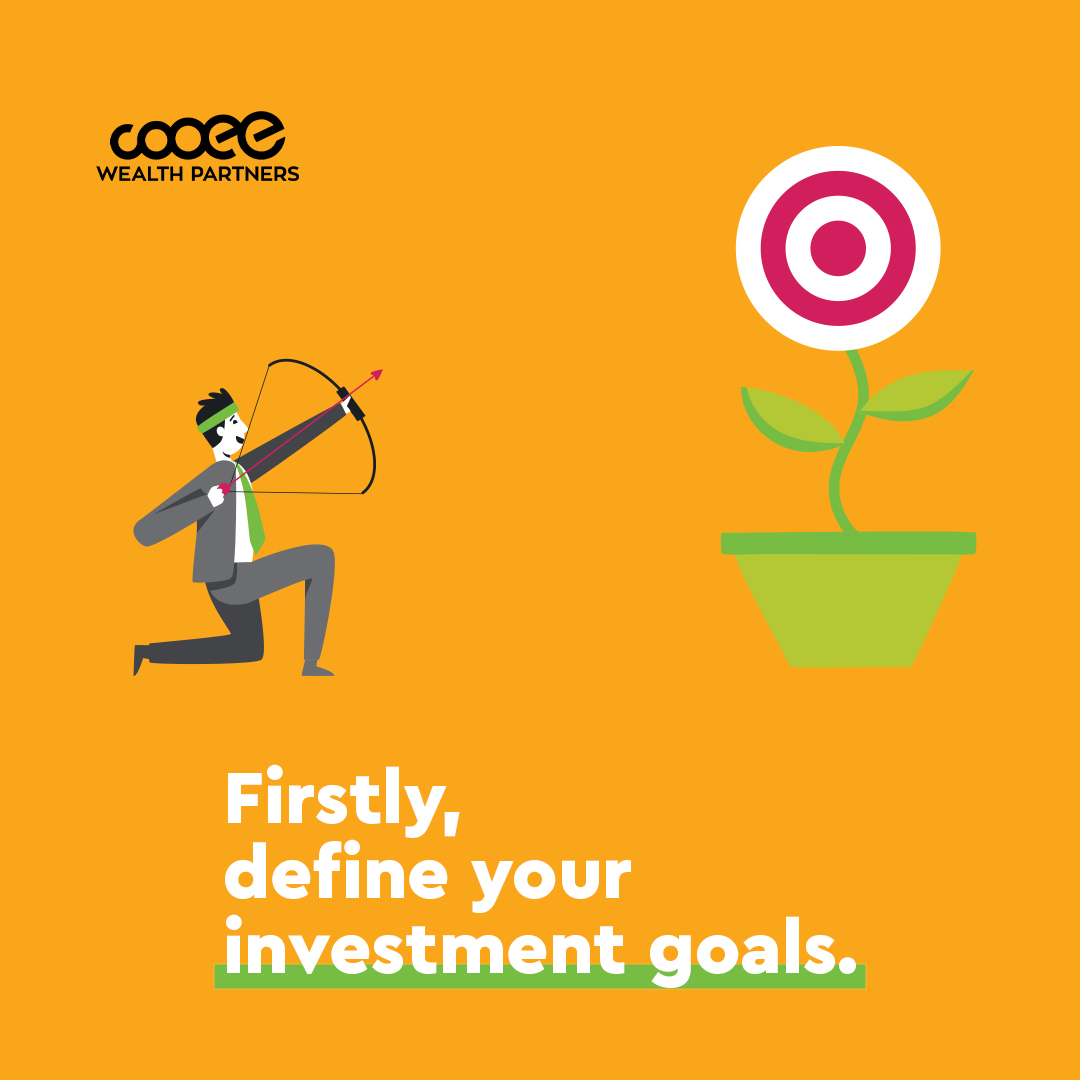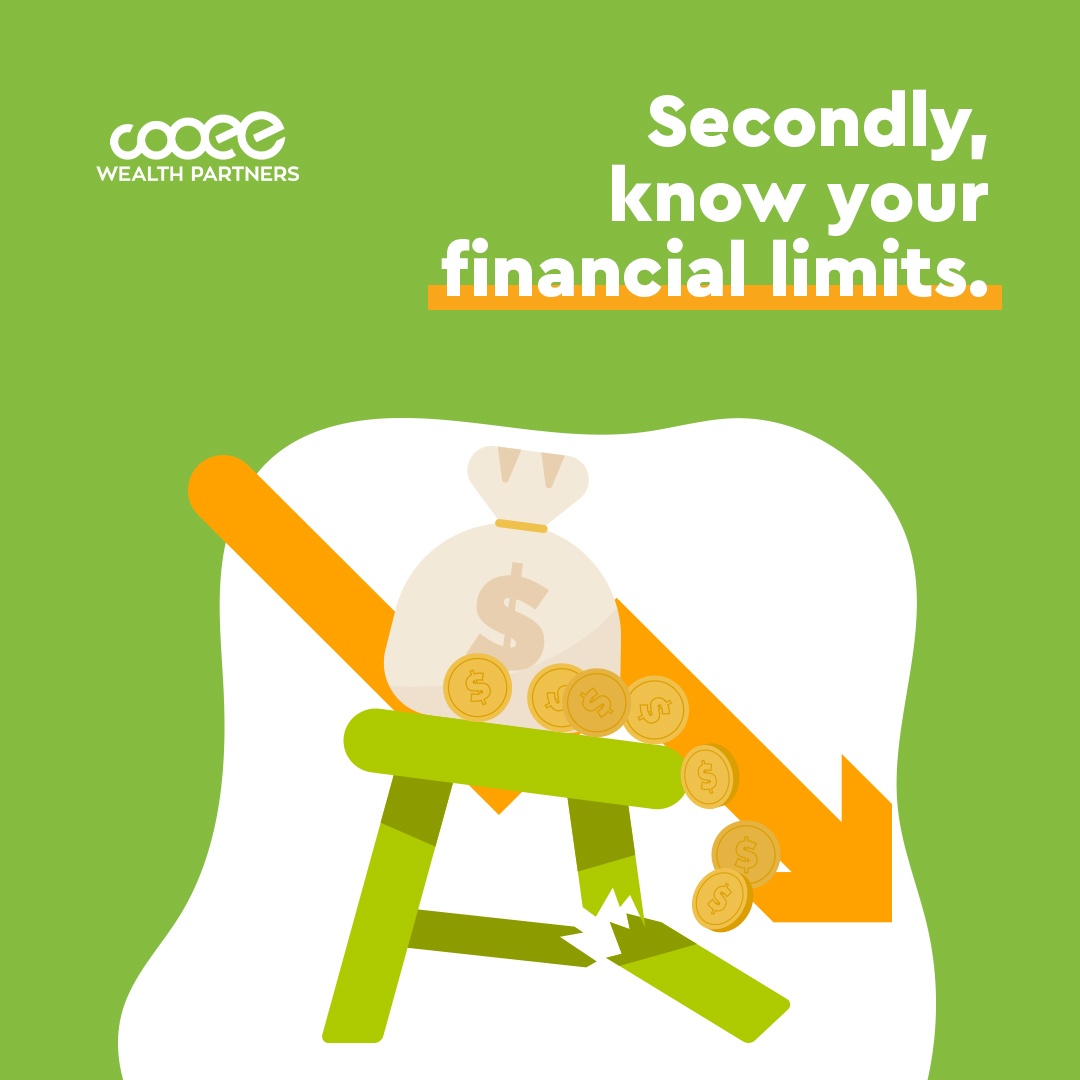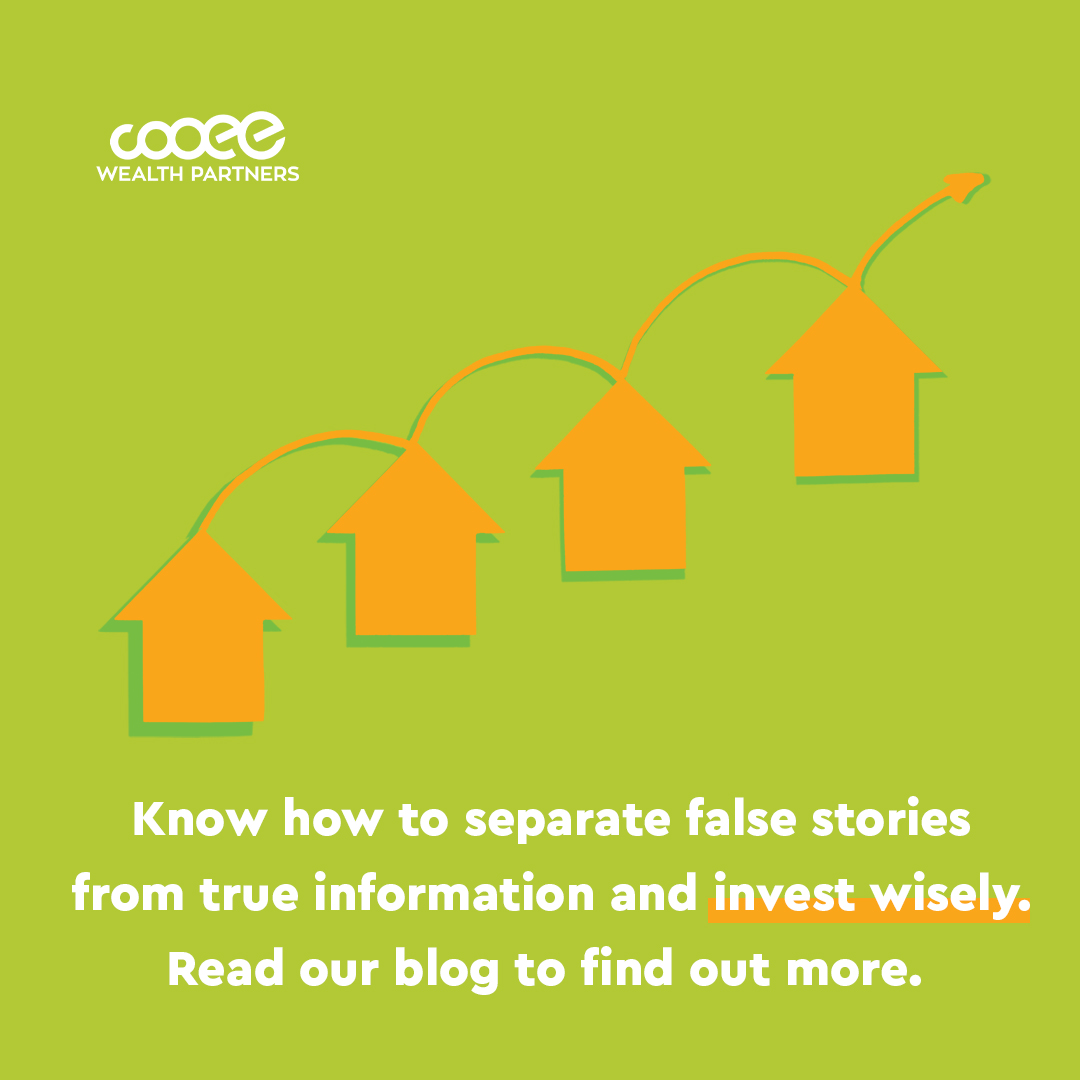
We have all read the stories… A young couple sacrificed their daily morning coffee and avocado toast to save enough money to buy their first property. After that, there was no stopping them – the capital in their first home rolling over into a second purchase, then a third.
But how accurate are these reports and should readers and potential investors take it at face value? Chances are, there is more to the story. And, as for investment, is it really the best way to secure your financial future?
While some property investors have found success based on the assumption that purchasing multiple properties, paying off debt and living off the income will create wealth, many others have found the strategy to be insufficient.
In fact, as total wealth managers, we would recommend revisiting the concept. In Cooee Wealth Partner’s experience, we have found that most people who attempt to purchase a multitude of properties within a short timeframe don’t consider how these properties fit into their overall investment and financial strategy.
We always ask our clients: What role does the property play in your portfolio? Each property or asset must have a defined role and contribution to your portfolio. A badly chosen property can be costly due to the transaction costs associated with buying and selling property.
So, what factors should you consider before leaping into the investment property market?
There are certain conditions that make purchasing a home easier, but for the better part of a few years, the everyday Australian has been priced out of it. The conditions of the past few years resulted in a soaring property market. Interest rates were extremely low and buyers were coming thick and fast, their borrowing power substantial.
The result? Property prices rose to a record high. But, nothing ever lasts. The recent interest rate hikes and the cost of living mean that our borrowing power is shrinking. And although prices are starting to fall around the country, so too is our equity further lowering our borrowing capacity.
This is why it’s all the more important to understand how to purchase property and establish an investment strategy that considers all of your needs and future plans.
What makes these situations possible (and why it’s not realistic for most people)
When economic conditions are stable and strong, committing to buying property is a whole lot easier. But, when interest rates continue to rise at unprecedented levels, continuing to afford mortgage repayments can become difficult.
Property investors across the nation are coming to terms with added financial pressure as some deal with the pitfalls of dealing with too much debt on their properties, presumably bought when conditions were better.
As our Head of Wealth Andrew Grinsell explains, Australians had mostly experienced falling interest rates from the 1990s right up to 2022. This meant that homeowners and investors could afford more in repayments, and also purchase further investments with rental returns covering the interest costs.
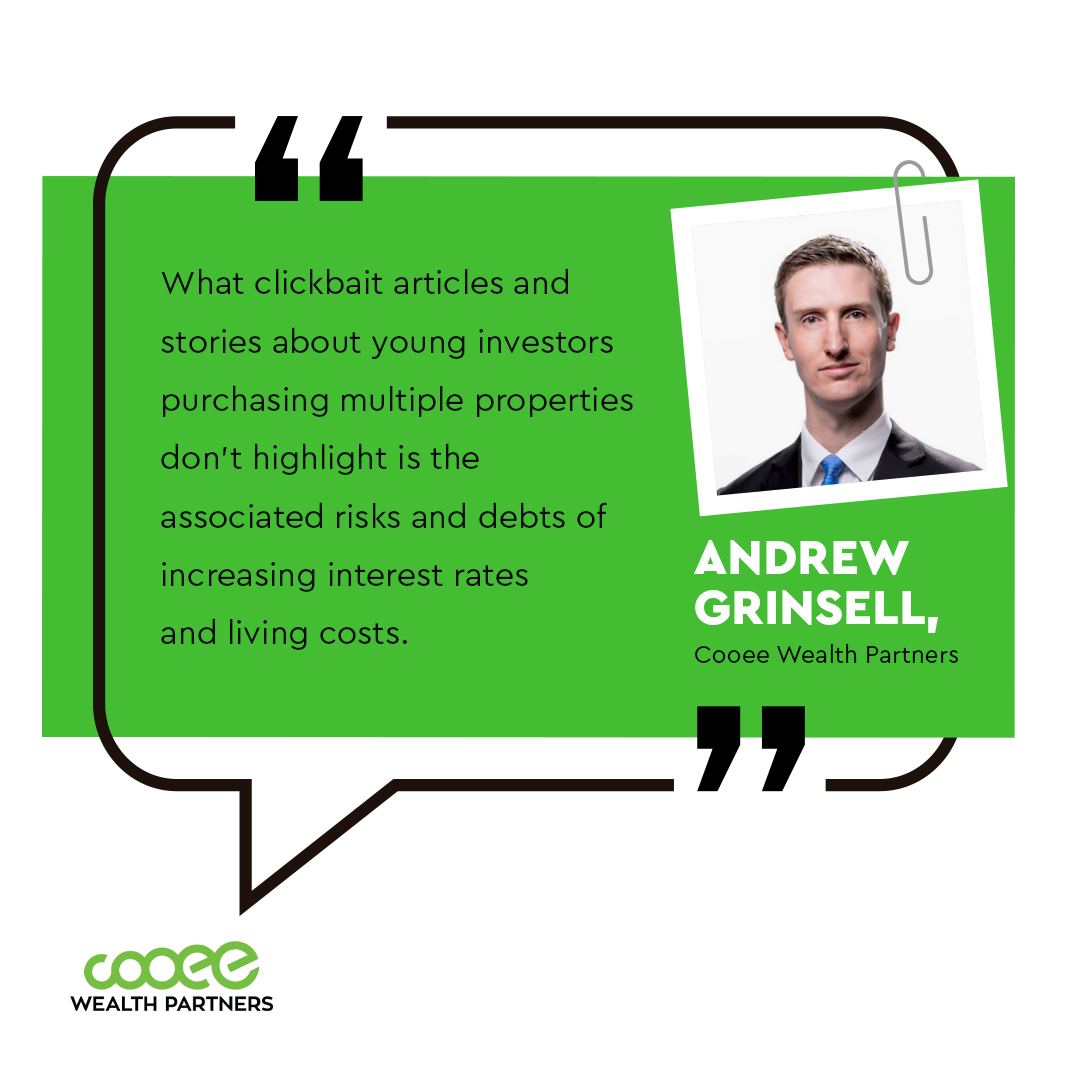
“What these clickbait articles and stories about young investors purchasing multiple properties don’t highlight is the associated risks and debts of increasing interest rates and living costs,” Andrew says.
Debt is never disclosed in these articles, never mind the net value of the subject’s property portfolio. Readers are left in the dark about how much debt these people have, so they aren’t able to hear about the real-life consequences of investing in multiple properties.
It’s important not to get caught up in the hype. Rather, invest in a well-planned and forward-thinking financial strategy.
3 ways to avoid a property debt crisis
Sadly, some Australians are now finding themselves in a difficult position – sink further into debt or sell and risk losing out on future gains. Property investment is a great tool to grow your wealth, but it’s important to be selective when it comes to buying.
There are a number of ways you can ensure you become an informed, savvy investor:
1. Be strategic with your portfolio
When it comes to managing investment portfolios, strategy is the key to success. Not only do you need to understand the market (or work closely with someone who does), but you must always look at the bigger picture and stay two steps ahead.
The strategic elements that we see as often overlooked are:
- Develop clearly defined objectives:This will help you narrow down your focus and allow you to identify which strategy to implement in effectively achieving your goals.
- Establish what you can afford to buy without creating financial stress:It can be difficult to turn off your emotions and focus only on the end goal, which is why working with an expert is wise when it comes to property investment. Understand and acknowledge your strengths and weaknesses so you can focus on your investment goals without going over your financial limits.
Identify the type of property best suited to meeting your long-term goals:Do you know how to recognise a good property investment from one that may not deliver the same financial benefits? Your property needs to contribute to achieving your financial goals, and it must have a distinct role in your investment portfolio.
2. Build your assets
It’s not uncommon to hear about investors buying the worst house on the best street. Why? Because investment comes down to location. Locality is something you can’t change. As for the aesthetic of the house, you most certainly can build on that.
Investing a little time and money to develop your asset can pay dividends. A splash of paint, a good clean-up, improved landscaping and smart, strategic small renovation projects will result in more rental income. Plus, there are associated tax breaks with spending relating to an investment.
After securing one property and seeing how it could generate passive income, it can be tempting to move on to the next one on the market. However, over time there can still be more value in improving the condition of your existing asset.
3. Review the markets
How often do you read about and research the market? Being a savvy investor means being updated on how the market is behaving and how this affects your next move.Aside from positive market trends and growth, it’s crucial to stay on top of the negative and often worrying trends that pop up. You need to know what is real and what is smoke and mirrors.
The other relevant point here is that Australia doesn’t consist of a single property market. It’s comprised of multiple markets. Investors are often deterred from investment because they see media headlines suggesting a market downturn but that doesn’t necessarily mean that all markets are in a downturn.
For example, Sydney and Melbourne have over 50% of Australia’s housing value and transaction volume, so what happens in these cities will likely move the national figures, which can mask what is happening in other locations.
When it comes to a property investment opportunity, you need to be aware of potential red flags, and which ones warrant your attention.
At the end of the day, it is important to do your research and understand the benefits of investing wisely. It’s important to set investment goals and develop a comprehensive financial strategy to achieve this. Property investment can still be rewarding if you’re strategic about how you go about it. And while you’re at it – stay away from the empty promises of clickbait headlines.
Book an appointment with us and we can discover the right ways to reach your wealth goals

